Geotechnical engineers are the unsung guardians of infrastructure safety, tasked with mastering the earth materials that support our cities and structures. These specialists blend civil engineering acumen with a deep understanding of geology for safe, sustainable construction. If you’re pondering a career as a geotechnical engineer or simply wish to understand their impact on modern building projects, this article will guide you through the vital work they perform, the rigorous education they undertake, and the robust job market awaiting them.
Key Takeaways
- Geotechnical engineering is a critical discipline for infrastructure projects. It bridges civil engineering, geology, and physics to ensure the stability and safety of structures by understanding the behavior of earth materials.
- A career in geotechnical engineering requires a strong foundation in mathematics and science, typically beginning with a bachelor’s degree in a relevant field, and is bolstered by practical experience through internships and licensure.
- The field of geotechnical engineering is expanding due to technological advancements like machine learning and geosynthetics. Geotechnical engineers are also essential for sustainable infrastructure development and climate change adaptation.
The Essence of Geotechnical Engineering
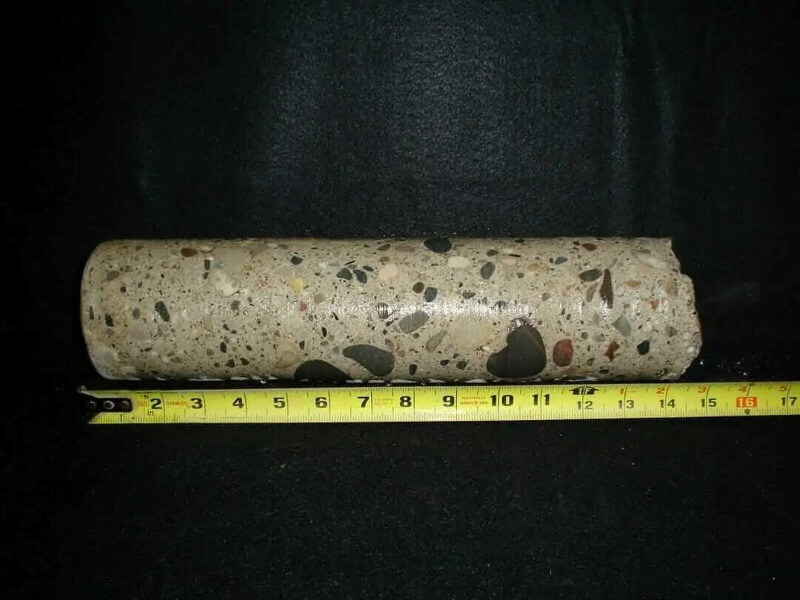
Geotechnical engineering unites the principles of civil engineering, geology, and physics. In the dance of engineering, the earth itself always takes center stage. At its core, geotechnical engineering is all about understanding and applying the mechanical behavior of earth materials, ensuring stability and safety in engineering projects.
These engineers perform site investigations, execute laboratory tests on soil and rock, and employ numerical models to forecast and scrutinize material behavior under stress. These processes are crucial in determining the suitability of construction sites for their foundation design and earth-retaining structures. From the tallest skyscrapers to the most expansive bridges, the strength of the foundation is predicated upon the meticulous work of geotechnical engineers. They play a pivotal role in enhancing the safety, sustainability, and financial viability of infrastructure projects.
Geotechnical engineering spans a vast range of applications, encompassing civil engineering projects, coastal engineering, and offshore geotechnical engineering, to name a few. Each project brings unique challenges related to ground and slope stability analysis, soil mechanics, and foundation engineering. Whether it’s a civil engineer considering soil behavior for a new highway, a mining engineer ensuring the stability of a tunnel, or a structural engineer calculating loads for a skyscraper, the expertise of geotechnical engineers is crucial.
Their work forms the bedrock of modern infrastructure, ensuring each project stands steady, safe, and secure.
Soil Mechanics and Rock Mechanics
Delving into the components of geotechnical engineering, soil mechanics and rock mechanics emerge as foundational disciplines. They equip geotechnical engineers with the tools necessary to analyze and predict the soil properties and rock behavior under different stresses. Understanding the compressibility and shear strength of soils is key to controlling the stability of a soil mass under structural loads.
These mechanics apply theoretical and empirical models to predict soil responses, which are essential for analyzing load-bearing capacities, computing settlement rates, and ensuring overall structural stability. From the strength and permeability of earth materials to stress distribution properties and behavior of rock formations, these mechanics are the eyes and ears of geotechnical engineers, enabling them to predict and respond to the earth’s behavior.
Engineering Geology
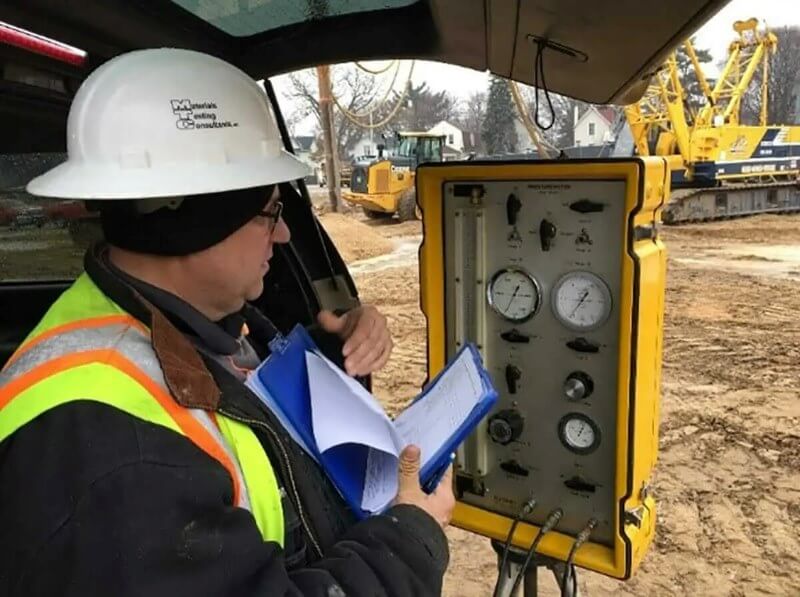
Another key facet of geotechnical engineering is engineering geology. It’s where the principles of geology meet engineering, accounting for geological factors in earth-structure interactions. Engineering geology is not an afterthought; it’s a crucial consideration at various project stages, including:
- Planning and impact analysis
- Design
- Construction
- Post-construction
It often impacts large-scale development sites, making it an integral part of every engineer’s toolkit.
To mitigate geotechnical risks, a detailed understanding of local geology, soil, groundwater flow and rock types is necessary. This knowledge helps in soil improvement, flood control and adjusting to climate change impacts. Simply put, engineering geology is the key to unlocking the secrets of the earth, empowering engineers to build safer, more resilient structures.
Becoming a Geotechnical Engineer: Education and Training
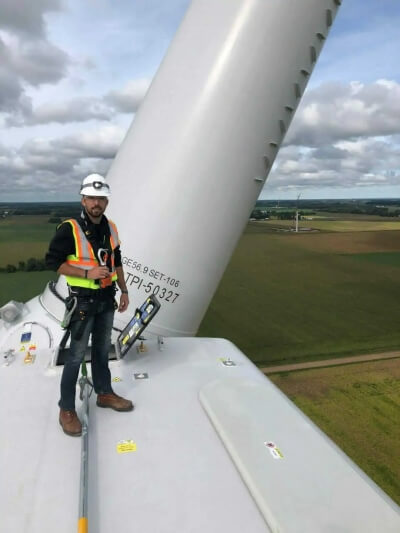
Should the role of a geotechnical engineer intrigue you, you may be curious about the path to becoming a geotechnical engineer. Aspiring engineers typically possess a bachelor’s degree in fields such as geotechnical engineering, civil engineering, or structural engineering. Some geologists even retrain to join this profession. The journey begins in high school, where a strong foundation in mathematics and science is crucial. Courses such as algebra, geometry, trigonometry, calculus, physics, chemistry, and geology are key stepping stones, while communication skills are also advantageous.
However, the journey extends beyond obtaining a degree. Practical experience is invaluable in this field. Internship programs are integral to education in geotechnical engineering, providing:
- Invaluable mentorship
- Exposure to construction sites
- Educational seminars
- Diverse departmental experiences to apply academic theory in real-world scenarios
To become a licensed professional engineer in the United States, geotechnical engineers must graduate from an ABET-accredited program, acquire four years of related work experience, and pass the state engineering exam.
Degree Programs
Degree programs for aspiring geotechnical engineers include geology, geophysics, mineral, mining engineering, or civil engineering. Within these programs, specialized subjects such as hydrogeology, geology, construction engineering, environmental engineering, and solid waste management are particularly important for geotechnical engineering students.
Thus, a well-rounded education in related fields lays the groundwork for a promising career as a geotechnical engineer.
Internships and Placements
Internships and placements significantly contribute to shaping the careers of budding geotechnical engineers, complementing their classroom learning. Gaining work experience through placements or internships at consultancy, construction companies, or engineering firms is vital in this field. Internships allow geotechnical engineering students to apply theories and methods from their courses in practical settings, enhancing their understanding and competence.
The practical experience gained from internships helps bridge the gap between academia and the civil engineering industry, strengthening the educational experience. Interns acquire invaluable insights into completing projects and the workflow within engineering firms, contributing to a comprehensive view of industry operations. In essence, internships offer a glimpse into the real world of a geotechnical engineer, equipping students with the tools and experience to hit the ground running in their careers.
Geotechnical Engineers in Action: Workplace and Responsibilities
What does the life of a geotechnical engineer look like after completing education and internship? Well, it’s a unique blend of office-based work, site investigations, and laboratory testing. At construction or exploration sites, geotechnical engineers are tasked with site visits to perform direct assessments. They can be found working in a diverse range of sectors including private engineering or construction companies, consultancies, and industries such as energy and marine.
Field investigations are a crucial responsibility for geotechnical engineers. They conduct subsurface investigations to collect soil samples and ascertain the ground’s stability. Using field tests, they evaluate potential soil conditions such as erosion and slope stability that could impact the safety of a proposed project. Post-analysis, they play an instrumental role in developing earthworks and deep foundations that are adapted to the site-specific ground conditions.
Being a geotechnical engineer is not a 9-to-5 desk job. It often requires:
- Operating under a variety of weather conditions due to extensive time spent on site visits and in analysis laboratories
- Substantial travel and adherence to deadlines
- Regularly scheduled client meetings to discuss progress, budget, and time constraints
- Collaborating with various project stakeholders such as clients, architects, and structural engineers to ensure project objectives are successfully met
Field Investigations
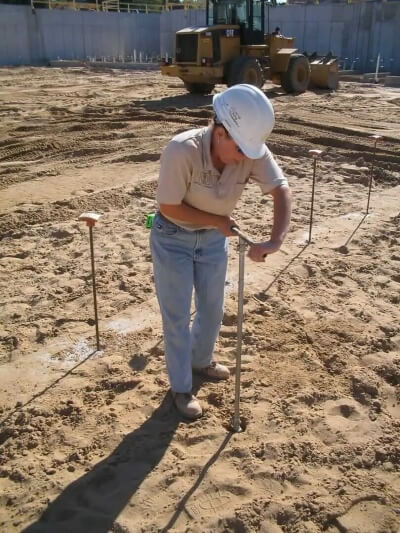
Stepping into the shoes of a geotechnical engineer, one of the first tasks on-site is often a field geotechnical investigation. Geotechnical engineers conduct site investigations and assess geotechnical conditions, collecting soil and rock samples to obtain representative data regarding subsurface conditions. During these investigations, they perform in-situ tests and gather data that is crucial for developing accurate geotechnical models and performing subsequent analyses.
Advancements in technology have also permeated this aspect of geotechnical engineering. The use of geotechnical data analytics, leveraging the power of big data, is advancing site characterization and risk assessment, leading to more reliable project outcomes. Thus, field investigations serve as the frontline in geo engineering, where the battle for safe and secure infrastructure begins.
Laboratory Testing
From the field to the lab, a geotechnical engineer’s work is varied and dynamic. Laboratory testing in geotechnical engineering is vital for determining the engineering properties and characteristics of soil and rock materials to predict their behavior accurately. This involves a range of classification and index property tests, such as:
- Water content determination
- Atterberg limits
- Particle size distribution
- Specific gravity of soil solids
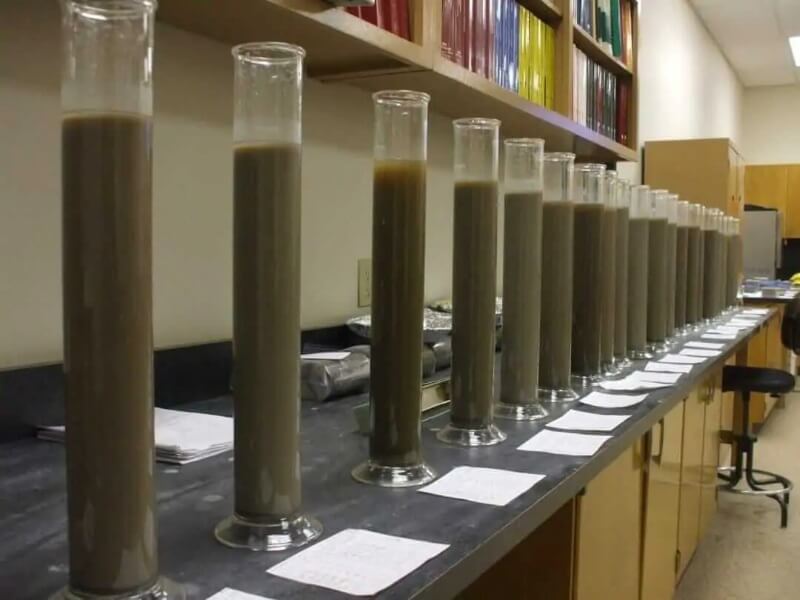
Strength and deformation testing, such as unconfined compression, consolidation or swell tests, direct shear, and triaxial tests, are key components of geotechnical lab testing. Permeability testing methods like constant head and falling head testing methods are crucial for understanding soil and rock permeability. Laboratory testing on rocks includes indexing rock properties and performing tests such as slake durability, unit weight determination, and porosity tests, as well as rock strength properties tests like the point load test, uniaxial compression strength test, and splitting tensile strength test.
Thus, the lab is where the secrets of the soil and rock are unraveled, providing invaluable insights to inform the design and construction of infrastructure, using a rudimentary soil classification system.
A Typical Day
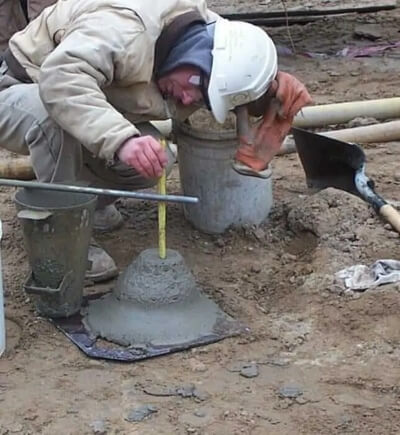
A typical day in the life of a geotechnical engineer does not exist. Some examples of projects at Materials Testing Consultants (MTC), a geotechnical engineering firm with an in-house materials testing lab in Grand Rapids, Michigan include:
- Field testing soils at Michigan State University’s future STEM Teaching and Learning Facility, the first in Michigan to use an innovative wood product, rather than concrete and/or steel, for its load-bearing structure. Known as mass timber, this framing style uses large solids of engineered wood.
- Geotechnical site investigation and foundation construction evaluation, including collection of samples for lab testing of subgrade soils, concrete, soil density, masonry, grouting, steel, floor slab moisture and vapor emission, and asphalt before building an Amazon Distribution Center in Caledonia, MI.
- Set up and work at an on-site laboratory to process over 4,000 concrete cylinders and 1,300 epoxy grout cubes at Thunderhead Wind Farm in Nebraska. Field testing services included cement-stabilized access roads, foundation subgrade soils, reinforcing steel, concrete, backfill soil density, and epoxy grout. The project included 108 wind turbines and surrounding access roads. The foundations were supported on the existing subgrade and rammed aggregate pier-improved subgrade. Two to three concrete placements were performed daily ranging from approximately 300 to 400 cy. Backfill of deep foundations meeting a specified unit weight was required. High-strength epoxy was used to grout turbine tower bases.
- Field testing different soils before the construction of Venue Tower, an 11-story, 88-unit apartment complex in downtown Grand Rapids.
- Materials testing and geotechnical engineering services for the construction of a 230,000-square-foot Meijer Store in Escanaba, one of the first Meijer stores to open in Michigan’s Upper Peninsula.
There is never a dull day in the geotechnical engineering career at MTC. He or she will often see much of the country as they complete numerous projects. An enjoyment of outdoor work is recommended unless you are specifically doing lab testing indoors.
Specializations in Geotechnical Engineering
The scope of sub-disciplines available for a geotechnical engineer is broad, offering a range of specializations to cater to diverse engineering project requirements and needs. These include foundation engineering, slope stabilization, and offshore geotechnical engineering. Foundation engineering is an essential specialization within engineering, where geotechnical engineers are tasked with planning and designing structures for diverse construction projects such as buildings, roads, embankments, and canals.
Slope stabilization is a critical specialization aimed at preventing landslides and erosion. Techniques used in slope stabilization may include retaining walls, anchors, and the strategic deployment of vegetation. Sustainable geotechnical engineering is a growing specialization focused on efficient resource utilization, recycling and reusing excavated materials, and designing with a long-term perspective to ensure soil stability and minimize the need for frequent infrastructure repairs or reconstructions.
Offshore geotechnical engineering represents a unique sphere of a geotechnical engineer’s role with distinct challenges as it is crucial in dealing with:
- seabed conditions
- currents
- tides
- wave and wind forces
- other environmental factors
when constructing offshore structures.
Foundation Engineering

Diving deeper into foundation engineering involves the design and construction of foundations for civil engineering projects. It’s centered on spreading and moderating highly concentrated stresses to transfer them to the subsoil with tolerable compression stresses. Foundation elements or systems are essential for transferring load combinations from superstructures to the underlying soils or rocks.
There are various types of foundations, including shallow foundations like isolated footings and raft foundations for building construction, as well as deep foundations such as pile foundations and drilled shafts for transferring loads to hard rock strata deep below the surface. The main responsibility of a foundation engineer is to develop a foundation system design that is technically sound, as well as feasible and cost-effective for construction process purposes. This ensures the design meets engineering standards and is within the project budget. In essence, foundation engineering is the bedrock upon which our built environment stands.
Slope Stabilization
Slope stability is a major consideration for geotechnical engineers, who analyze natural slope properties and reinforce them to prevent landslides. This ensures the safety and resilience of infrastructure projects. Traditional slope stabilization techniques often involve the use of earth retention systems and retaining structures such as soldier piles and lagging, soil nailing, and rock bolting.
Innovations in geosynthetics have led to their increased use in reinforcing soil structures across transportation networks, contributing to more stable retaining walls and improved slope stability. In essence, slope stabilization is a guardian against the destructive forces of nature and plays a major role in protecting our infrastructure from landslides and erosion.
Offshore Geotechnical Engineering

Offshore geotechnical engineering presents its own unique challenges, particularly when dealing with seabed conditions and other environmental factors. Assessing the physical properties of the seabed is fundamental for foundation design and engineering when constructing offshore structures like oil platforms, wind farms, and subsea pipelines. To address challenges of soft seabeds, offshore geotechnical engineering has developed innovative foundation designs such as suction caissons or deep soil mixing techniques. Best practices include extensive site investigations, applying advanced analysis techniques, and maintaining ongoing monitoring.
Whether it’s an offshore wind farm or an oil rig, the work of offshore geotechnical engineers ensures these structures can withstand the harsh conditions of the marine environment.
Technological Innovations in Geotechnical Engineering
In our rapidly changing world, geotechnical engineering keeps pace. Technological innovations have transformed the field, with advancements in geosynthetics, software tools, and machine learning applications. For instance, recently developed thermally bonded non-woven geotextiles have enhanced the tensile strength and puncture resistance of geosynthetics. Improvements now include better resistance to chemicals and biological organisms in the soil, as well as to UV radiation.
The evolution of geosynthetics has led to a reduced reliance on natural aggregates, resulting in lower overall project costs. Furthermore, the industry is evolving with the adoption of sophisticated tools and methods that reflect technological advancements in the field. This fusion of technology and geotechnical engineering is driving the future of infrastructure development.
Geosynthetics
Geosynthetics, such as thermally bonded non-woven geotextiles, provide high tensile strength and puncture resistance, making them ideal for reinforcing soil structures. These geotextiles are created by bonding continuous polymer filaments through a heating process, resulting in fabrics with specific properties:
- High tensile strength
- Puncture resistance
- Specific permeability
- Pore sizes
Geosynthetics like geogrids and geotextile sheets are vital for reinforcing soil in transportation projects, enabling safer retaining walls and slopes. In railway systems, geosynthetics serve to prevent material displacement caused by train vibrations through their use in separation, filtration, and reinforcement. Different types of geosynthetics, such as woven and non-woven geotextiles, biaxial and multiaxial geogrids, and other products like geocells and geomembranes, have diverse applications across civil engineering. They are resistant to soil chemicals and biological organisms and offer UV protection, reducing the reliance on natural aggregates, which leads to lower construction costs.
The future performance of infrastructure is expected to see improvements with geosynthetics, leading to extended lifespans, reduced costs, and lessened maintenance demands. Geosynthetics are also contributing to sustainable practices in geotechnical engineering, limiting emissions and reducing the need for soil excavation and chemical additives.
U.S. Job Outlook for Geotechnical Engineer Jobs
Geotechnical engineers have a promising future ahead. The growth rate for geotechnical engineer jobs in the United States shows a projected increase of 8% from 2020 to 2030, faster than the average for all occupations. This growth is primarily driven by the increasing need for infrastructure improvements, environmental protection, and urban development projects across the country.
Geotechnical engineers are crucial in these projects, responsible for assessing soil and rock foundations, designing earthworks and retaining structures, reviewing construction plans, and ensuring construction project safety and durability. There is expected to be a steady demand for geotechnical engineers in various industries, including construction, transportation, and environmental engineering. As a result, job prospects for geotechnical engineers are favorable, with ample opportunities for employment and career advancement in the field.
Salary Expectations for Geotechnical Engineers
For those interested in the financial prospects of a career as a geotechnical engineer, the Bureau of Labor Statics has some data for the 2022 median annual salary for engineers in the United States. According to that information, their salary depends on the specific discipline. For example, Environmental Engineers earn $96,530 per year, while Environmental Technologists and Technicians who assist them earn just $50,980 per year on average. Mining and Geological Engineers earn $97,490 per year. Salary expectations can vary based on other factors too, such as:
- Experience level
- Education
- Geographic location
- The specific industry or company
Entry-level geotechnical engineers can expect to earn around $55,000 to $65,000 per year, with potential for increases based on performance and experience. Mid-career geotechnical engineers with several years of experience can earn between $60,000 and $99,000 annually, depending on various factors. Senior geotechnical engineers, with significant experience and possibly a Professional Engineer (PE) license, earn upwards of $100,000 to $120,000 annually.
Desired Skills and Qualifications
The path to becoming a successful geotechnical engineer is not only about academic qualifications but also about developing a specific skill set. Employers typically look for candidates with:
- A bachelor’s degree in civil engineering or a related field
- A master’s degree or PhD (preferred for more advanced positions)
- Relevant work experience, particularly in geotechnical engineering or related areas. This could include internships, co-op programs, or previous employment in the field.
Proficiency in geotechnical engineering software and tools, as well as a strong understanding of geotechnical principles and practices, are essential. The ability to analyze complex problems, interpret data, and develop innovative solutions is crucial for geotechnical engineers. Strong written and verbal communication skills are important for effectively communicating with team members, clients, and other stakeholders. Experience or skills in project management, including the ability to manage budgets, schedules, and resources, are often required for senior-level positions. Some employers may prefer or require certifications such as a Professional Engineer (PE) license or other relevant certifications.
The skills and qualities valued in geotechnical engineers include:
- The ability to work effectively in a team environment, collaborate with others, and contribute to a positive work culture
- The ability to identify problems, evaluate options, and implement effective solutions in a timely manner
- A strong commitment to safety protocols and practices
These skills and qualities are essential for success in the field of geotechnical engineering.
The Importance of Geotechnical Engineering in Modern Infrastructure
The significance of geotechnical engineers, particularly when it comes to modern infrastructure, is undeniable. Geotechnical engineers play a crucial role in preventing damage to buildings and structures due to subsurface conditions, ensuring safety and stability, and mitigating natural occurrences such as earthquakes and slope stability shifts. The expertise in engineering geology within the field of geoengineering is essential for determining the most suitable locations and designs for large-scale structures, including dams, foundations, and transportation routes.
Conducting a geological site investigation before the initiation of a construction project can identify and address geological challenges, leading to substantial cost savings by preempting potential issues. From the foundations of towering skyscrapers to the complexity of expansive bridges, the role of geotechnical engineers is fundamental. It’s not just about building structures; it’s about building with an understanding of the earth, ensuring each structure stands on a firm and secure foundation.
Natural Hazards and Risk Mitigation
In a world where natural hazards such as earthquakes and landslides are a reality, geotechnical engineers play a key role in risk mitigation. They evaluate risks through field investigations, assessing factors such as soil strength and composition to ensure the stability and safety of construction sites. Machine learning, such as support vector and random forest regression models, and technologies such as remote sensing, aid geotechnical engineers and other professionals involved in predicting structural behavior during earthquakes and simulating complex scenarios for risk mitigation.
In regions susceptible to seismic activity, geotechnical engineers employ earthquake-resistant design using base isolation and energy dissipation techniques to protect structures from damage. The safety and durability of urban structures are enhanced using advanced materials and construction process techniques in smart cities to counteract the effects of natural disasters. Thus, geotechnical engineers are the unsung heroes, safeguarding our infrastructure against the unpredictable forces of nature.
Sustainable Development
As we move towards a more sustainable future, the role of the geotechnical engineer becomes even more crucial. Geotechnical engineers ensure environmentally responsible construction by:
- Adhering to sustainability standards
- Minimizing ecological and community impact
- Working collaboratively across multiple sub-disciplines, combining expertise from construction, environmental sciences, and urban planning for sustainable development.
Innovative geotechnical solutions, like promoting sustainable foundations and stability, play a crucial role in enabling environmentally friendly construction projects. Furthermore, the field of geotechnical engineering is embracing a trend toward sustainability by adopting eco-friendly practices. It contributes to sustainable development through smart water management, including advanced water treatment and recycling technologies.
In essence, the geotechnical discipline is at the forefront of sustainable development, ensuring our built environment is not only strong and secure but also kind to our planet.
Future Prospects and Challenges

As we gaze into the future, geotechnical engineering presents a mix of exciting opportunities and substantial challenges. Advancements in geosynthetics have improved the design of geotechnical and geo-environmental systems, leading to better barrier systems for landfills and reinforced soil technology. However, industry experts foresee the need for the industry to adapt to technological progress, environmental changes, and shifting societal needs.
Ambiguity and uncertainty present major difficulties in the application of statistical and mathematical modeling tools in geological and geotechnical engineering. On the other hand, geotechnical engineers have the opportunity for career advancement and higher salaries through voluntary certification offered by organizations like the American Academy of Environmental Engineers and Scientists. Continuing education for geotechnical engineers is available through professional associations such as the American Society of Civil Engineers’ Geo-Institute, which supports ongoing professional development.
Climate Change Adaptation
With the looming threat of climate change, geotechnical engineers have a critical role to play in adaptation. Climate change exacerbates geotechnical challenges with increased incidences of intense rainfall, extreme temperatures, and sea-level rise that impact soil stability. Adapting to the impacts of climate change requires geotechnical engineers to account for changes in soil and rock behavior, with considerations for thermal expansion, contraction, and melting permafrost in structural performance.
Geotechnical engineers implement sustainable practices to reduce greenhouse gas emissions and enhance infrastructure resilience, mitigating the adverse effects of extreme weather events. Machine learning methods advance the capacity of geotechnical engineers to predict and respond to complex, climate change-related phenomena such as landslide prediction and surface subsidence. Thus, geotechnical engineering stands as a crucial player in our response to climate change, ensuring our infrastructure can withstand the challenges of a changing climate.
Software Tools and AI
Software tools and AI methods are increasingly integrated into geotechnical engineering for complex problem-solving, geotechnical calculations, and predictive analysis, especially in university and research facility settings. The development of dedicated software to analyze results from subsurface investigations and field tests is increasingly being used. This is crucial for modeling future conditions of construction projects.
AI is also being integrated into geotechnical engineering to address complex problems through techniques such as neural networks, deep learning, and support vector machines. Specific applications in the industry include soil classification, bearing capacity prediction, and damping ratio prediction.
Using AI to enhance data analysis, enable predictive modeling, optimize infrastructure design and monitor results continually improves the efficiency, safety, and sustainability of construction projects.
Urbanization and Smart Cities
The rapid pace of urbanization and the rise of smart cities present both opportunities and challenges for geotechnical engineers. Urbanization poses geotechnical challenges such as limited space, high population density, and the demand for sustainable construction practices in urban environments. Geotechnical engineering is integral to the development of smart cities, requiring engineers to incorporate intelligent transportation systems to reduce congestion and improve traffic flow.
Civil engineers in the geotechnical field are essential in designing energy-efficient buildings and infrastructure that support the sustainable architecture of smart cities. Geotechnical engineers are involved in the integration of renewable energy solutions in smart cities, promoting sustainability and reducing reliance on fossil fuels. As smart cities evolve, geotechnical engineers continue to drive innovation and sustainable solutions through their expertise in infrastructure development and emerging technologies.
Summary
From the foundations of towering skyscrapers to the stability of expansive bridges, the role of geotechnical engineering is undeniably crucial. It’s a field where geologists and engineers unite, applying knowledge of the earth’s materials in the design and construction of infrastructure. The work of geotechnical engineers is integral to our modern world, ensuring the stability and safety of our built and natural environment. As we look to the future, the need for geotechnical engineering will only grow, with challenges such as climate change, urbanization, and the demand for sustainable practices paving the way for innovation and adaptation.
Frequently Asked Questions
What does a geological engineer do?
A geological engineer applies principles of geology to solve engineering problems related to the Earth’s crust and subsurface. They search for mineral deposits, evaluate possible extraction sites, and plan efficient and environmentally sound extraction methods.
Are geotechnical engineers rich?
Geotechnical engineers can earn a good salary, with experienced professionals making up to $200k plus bonuses, but it’s unlikely they’ll become rich in this field.
What education and training do you need to become a geotechnical engineer?
To become a geotechnical engineer, you need a bachelor’s degree in geotechnical engineering, civil engineering, or a related field, along with strong mathematical and science skills and practical experience through internships.
What is the job outlook for geotechnical engineers in the United States?
The job outlook for geotechnical engineers in the United States is favorable, with a projected 8% growth rate from 2020 to 2030, indicating promising career opportunities.
What are the future prospects and challenges in geotechnical engineering?
In geotechnical engineering, the future holds exciting prospects and significant challenges. Advancements in geosynthetics and machine learning have improved the field, but it needs to adapt to technological progress, environmental changes, and shifting societal needs.



